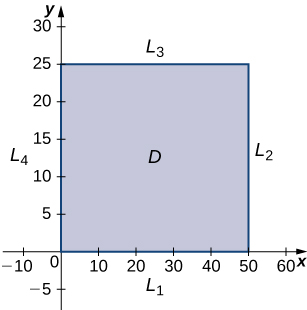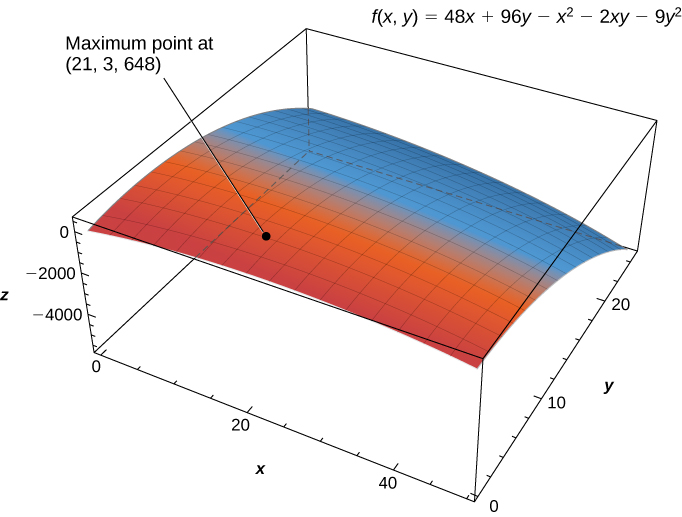| << Chapter < Page | Chapter >> Page > |
Use the problem-solving strategy for finding absolute extrema of a function to find the absolute extrema of the function
on the domain defined by and
The absolute minimum occurs at
The absolute maximum occurs at

Pro- company has developed a profit model that depends on the number x of golf balls sold per month (measured in thousands), and the number of hours per month of advertising y , according to the function
where is measured in thousands of dollars. The maximum number of golf balls that can be produced and sold is and the maximum number of hours of advertising that can be purchased is Find the values of and that maximize profit, and find the maximum profit.
Using the problem-solving strategy, step involves finding the critical points of on its domain. Therefore, we first calculate and then set them each equal to zero:
Setting them equal to zero yields the system of equations
The solution to this system is and Therefore is a critical point of Calculating gives
The domain of this function is and as shown in the following graph.

is the line segment connecting and and it can be parameterized by the equations for We then define
Setting yields the critical point which corresponds to the point in the domain of Calculating gives
is the line segment connecting and and it can be parameterized by the equations for Once again, we define
This function has a critical point at which corresponds to the point This point is not in the domain of
is the line segment connecting and it can be parameterized by the equations for We define
This function has a critical point at which corresponds to the point which is not in the domain.
is the line segment connecting and it can be parameterized by the equations for We define
This function has a critical point at which corresponds to the point which is on the boundary of the domain. Calculating gives
We also need to find the values of at the corners of its domain. These corners are located at
The maximum critical value is which occurs at Therefore, a maximum profit of is realized when golf balls are sold and hours of advertising are purchased per month as shown in the following figure.


Notification Switch
Would you like to follow the 'Calculus volume 3' conversation and receive update notifications?